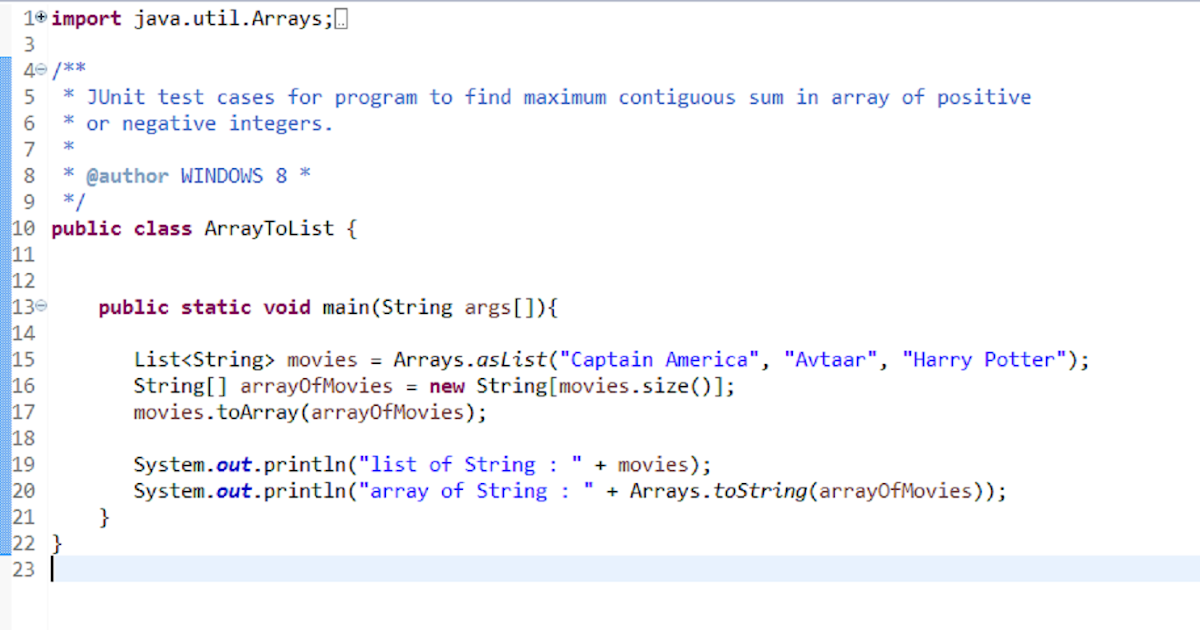
StringBuilder and StringBuffer are the classes used to concatenate multiple values into a single String. Converting int to String using StringBuffer or StringBuilder You can specify the number of decimal places and comma separator for better readability as shown in the above example.
#Java convert string to int how to#
If you know how to use DecimalFormat method, it is the best option for converting Integer to String, because of the level of control that you can have with the formatting. Output The number to be converted is: 12345 ("The string version of 12345 is: " + str) ("The number to be converted is: " + number) import ĭecimalFormat numberFormat = new DecimalFormat("#,#") You can use it to format a number to a String representation following a certain pattern.

It has a lot of features designed to parse and format numbers. Output With format method: string = -1234 Converting int to String using DecimalFormatĭecimalFormat is a concrete subclass of NumberFormat class that formats decimal numbers. String str = String.format("%d", number) This method returns a formatted string, according to the format specifier and the specified arguments.Ĭonvert int to String using String.format(). args: arguments that refer to the format specifiers set in the format parameter.format: the format string, which includes format specifier and sometimes a fixed text.l: the local to be addressed during the formatting.public static String format(String format, Object… args).public static String format(Locale l, String format, Object… args).Though the purpose of this method is to format a string, it can also be used for conversion. In Java, String.format() is a new alternative method that can be used for converting an Integer to a String object. Output With valueOf method: string5 = 1234 Converting int to String using String.format() ("With valueOf method: string5 = " + str) This method returns the string representation of the int argument.Ĭonvert Integer to String using String.valueOf(). i: the integer that needs to be converted.This approach is considered as a best practice due to its simplicity.

String.valueOf() is static utility method of String class that can convert most primitive data types to their String representation. The output string is: -2147483648 Converting int to string using String.valueOf(int) If the radix parameter is used, the returned string is specified by the respective radix.Ĭonvert Integer to String using Integer.toString(). The returned value for both expressions is a Java String that represents the integer “i” argument.

The radix value is an optional parameter and if it is not set, for the decimal base system the default value is 10. radix: the used base – number system in order to represent the string.public static String toString(int i, int radix).There are two different expressions for Integer.toString() method: This approach, unlike the others, can return a NullPointerException. The Integer class has a static method that returns a String object representing the int parameter specified in the Integer.toString(int) function. How we convert int to String in Java? Integer to String conversion in Java: using Integer.toString(int) How we convert int to String in Java: using StringBuffer or StringBuilderįor each of these methods, I will be discussing the syntax, parameters involved and return value along with sample example programs in Java.How we convert int to String in Java: using DecimalFormat.How we convert int to String in Java: using String.format().How we convert int to String in Java: using String.valueOf(int).



 0 kommentar(er)
0 kommentar(er)
